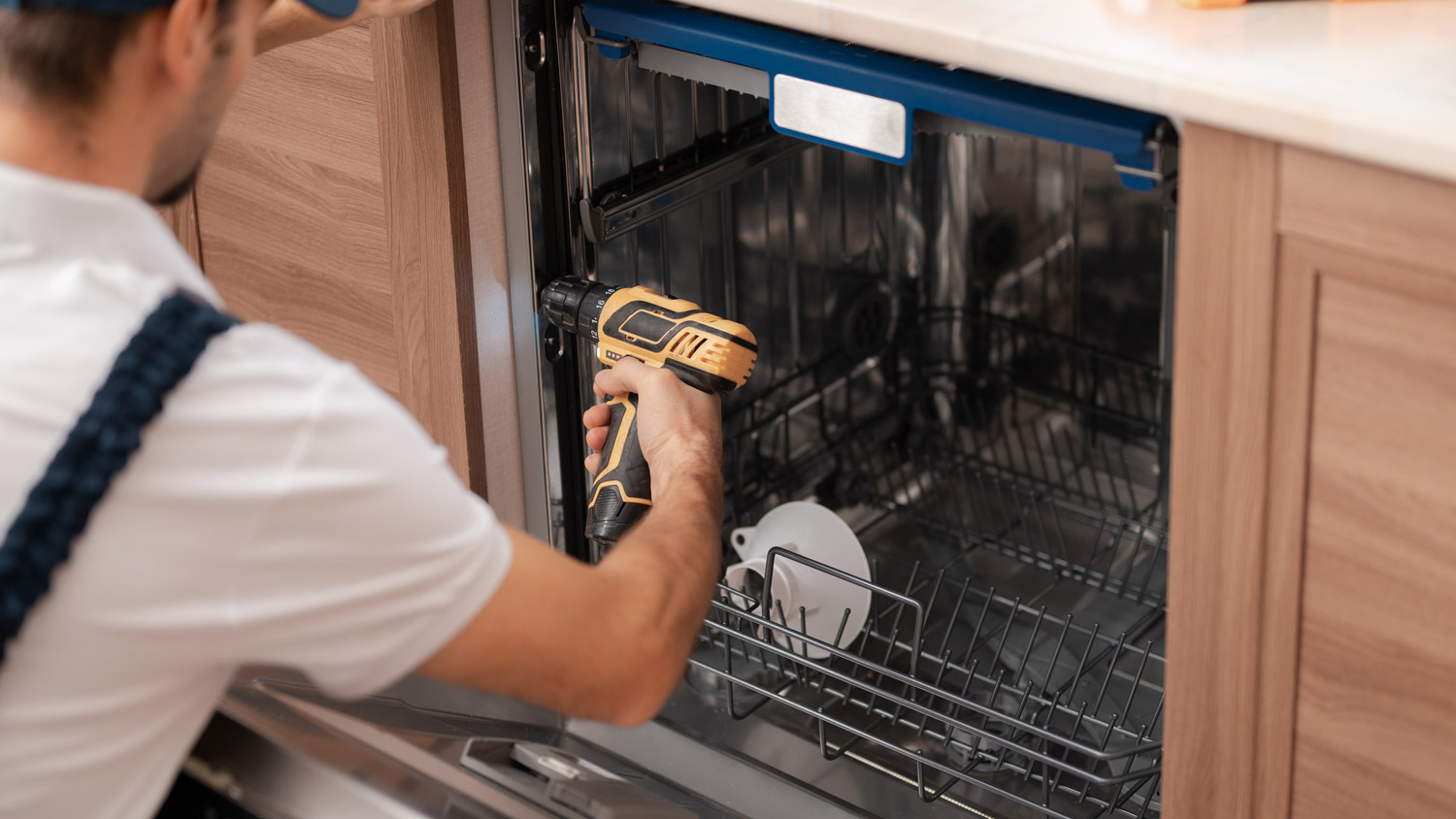
Explore the common types of oven repairs and how much they cost based on the problem, the part, and the type of oven. This guide will tell you the average cost to repair an oven.
There’s more advice in here than just “ditch the snacks,” we promise (although that does help)


Most people don’t think twice when they open the fridge to grab a snack or stare off into space, hoping for something yummy to appear out of the blue. But, according to the Department of Energy (DOE), residential refrigerators use around 14% of the total energy use in the home on average, meaning your fridge could be costing you money. These 10 tips will help you cut down on the cost of running your refrigerator.

Anyone with a toddler in the house knows that small hands can offset the thermostat on your fridge. So, though it might seem obvious, keeping your fridge at the right temperature can shave off energy usage.
The U.S. Department of Energy (DOE) recommends setting your refrigerator between 35 to 38 degrees Fahrenheit and 0 degrees Fahrenheit for the freezer. Be sure to check your temperature settings—and maybe check more routinely if you have young, explorative children!
To test the temperature of your fridge, plunk a thermometer in a glass of water in the middle of the refrigerator and check it after 24 hours. Avoid placing the thermometer in the door or top shelf, which is typically warmer, or in the back or bottom of the fridge, which is typically cooler.
A full fridge is just as useful for getting creative in the kitchen as it is practical for your energy efficiency or if the power goes out. When more items are in your fridge, they work together to keep the fridge insulated and cooler. For larger refrigerators, fill up a couple of water bottles and place them inside to help keep it chilly and crisp.
It might feel a bit like playing Tetris to organize your refrigerator efficiently; just make sure you allocate enough room for airflow circulation. You don’t want to block any air vents with your jam-packed fridge, or that cool air won’t travel evenly throughout your appliance.
Though it might be tempting to put those leftovers out of sight and mind after mealtime, don't put hot food in the fridge right away. If you're packing up your leftovers, let them sit on the counter until they cool to room temperature. Doing so helps prevent unnecessary heat from entering your appliance and causing it to work extra hard to lower internal temperatures.
Another simple tip is to keep your unit away from warm spots or direct sunlight, which can heat your appliance and increase its energy usage. If possible, avoid placing the refrigerator near the oven or next to a window. If your space is limited, consider investing in solar window film to help curb direct sunlight from hitting your fridge.
The Marion Institute says one way to test the seals on your fridge is to do what’s called the dollar bill test. Take out that old dollar bill from your wallet and place it between the fridge door. Then, gently pull on the note to see if it stays. If it doesn't, then that dollar bill isn’t the only thing slipping out of the seal of your fridge—cold air and your money are, too!
Replace the seal if your fridge fails the dollar bill test to properly seal it up and prevent money from essentially slipping out into the air.
Taking a late-night trip to the fridge or opening it and staring forlornly at it for minutes on end might seem like mere bad habits, but they could be costing you money. Every time you open your fridge, you let out the cold air, causing the machine to kick in and use energy to regulate the food inside. Simply opening your fridge less frequently can prevent it from guzzling electricity, helping to lower costs.

Routine cleaning is also key to having a high-functioning refrigerator. Wipe down dirty surfaces, like dusting the fridge top, and clean the condenser coils at least twice a year; just remove the grill at the bottom and then grab your vacuum cleaner. While the grill is off, go ahead and clean it thoroughly, too. When it's working harder, the energy bill rises, and the refrigerator is more susceptible to needing repairs.
Regular fridge cleanings are especially important if you have pets. A pileup of hair and dander clogging the coils forces the unit to work harder to keep the items cool.
Speaking of repairs, if your unit isn’t getting cold enough, unintentionally freezing fresh produce, unusual sounds or heat, or problems running, figure out what’s wrong with your fridge as fast as possible to help improve its functionality.
Some fixes for common fridge problems can be a DIY appliance repair project, but if you find yourself unable to solve the problem alone, then you might want to hire a local appliance repairperson to inspect and repair your refrigerator.
Once your unit starts approaching 12 years old—or you find yourself needing to call in the pros for constant issues with your fridge—you might want to consider getting a newer, more efficient model.
The most efficient refrigerators are Energy Star-certified. This certification is backed by the U.S. Environmental Protection Agency (EPA) and the U.S. Department of Energy (DOE) as a leading contender for energy efficiency.
Energy Star states that you could save over $220 by the time your new, Energy Star-certified refrigerator has run through its 12-year lifetime.
When you do buy new, take advantage of recycling your old fridge. Some retailers or installation companies will take your old refrigerator and recycle it for you. If they don't provide haul away and recycling services, check with your local waste management company to see if they can help.
You can also try a local scrap metal recycler. According to the American Iron and Steel Institute, the average top and bottom refrigerator contains around 79 pounds of recyclable steel, while a side-by-side refrigerator has approximately 150 pounds.
Regardless of the age of your refrigerator, one of the most important things you can do is conduct a periodic checkup for your fridge. Preventive maintenance helps extend the life of your appliance and reduce your energy bills.
From average costs to expert advice, get all the answers you need to get your job done.

Explore the common types of oven repairs and how much they cost based on the problem, the part, and the type of oven. This guide will tell you the average cost to repair an oven.

Depending on repair needs and machine age and type, the cost to replace a heating element in a dryer can vary. Learn the average repair costs.

Discover the average dishwasher installation cost, key price factors, and tips to save on your project. Get transparent, expert-backed estimates.

Ventless dryers are growing in popularity, and there’s a reason. This guide will run through all the ventless dryer pros and cons you need to know.

You have options for disposing of old appliances, like your refrigerator, freezer, washer or dryer. Use this guide to learn what to do with old appliances.

Is food going bad too quickly? Is your refrigerator making strange noises? This guide will help you determine whether it’s time for a repair technician or a new refrigerator.